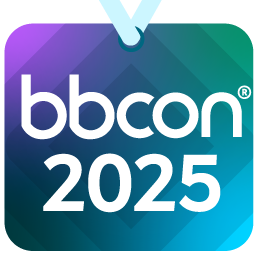Choosing the Right Prospecting Tool: Blackbaud ResearchPoint™ vs. Prospect Insights





In the vast world of prospect research, it is easy to get overwhelmed by the volume and depth of data available. Even seasoned prospect researchers can find themselves down a rabbit hole when they lose sight of their goal: to determine if the person is a good prospect and what their potential philanthropic capacity is. This is where tools like Blackbaud ResearchPoint and Prospect Insights come into play. Both tools streamline the process of identifying and qualifying major gift prospects by centralizing descriptive research data from multiple sources alongside AI-powered predictions about likelihood to give.
Let’s break down what each tool offers, how they differ, and how they can best serve your prospecting efforts.
ResearchPoint
Blackbaud’s comprehensive, standalone software platform for donor prospect research, ResearchPoint's key features include:
- Detailed prospect research data on individual prospects
- Custom donor models (additional subscription)
- Customizable research lists for flexible segmentation
- Integration with Blackbaud Raiser’s Edge NXT®
ResearchPoint integrates with Raiser’s Edge NXT, but a Raiser’s Edge NXT subscription is not required to use ResearchPoint. Constituents can be imported into ResearchPoint from any database for screening, and constituents with screening results can be exported as a flat file.
Prospect Insights
An AI-powered tool within Raiser’s Edge NXT that delivers actionable insights and recommendations for fundraisers, Prospect Insights is known for its:
- Guided user experience
- Built-in donor models, including Major Giving Likelihood and Target Gift Range up to $100K, refreshed quarterly
- Predicted wealth attributes including Annual Income, Net Worth, Investments, and Discretionary Spend
- Limited wealth data
- Seamless user interface with Raiser’s Edge NXT
Unlike ResearchPoint, Prospect Insights is not a standalone software platform. Prospect Insights is a component of Raiser’s Edge NXT and can only conduct screening and analysis of constituent records within Raiser’s Edge NXT.
Prospect Insights Pro
Builds on the capabilities of Prospect Insights by adding even more AI-driven predictions and insights, including:
- Guided user experience with analysis and recommendations to help the user interpret and take action from the data
- Additional donor models including Giving Likelihood, Target Gift Range up to $1M, Potential Gift Range, and Planned Giving Likelihood, refreshed quarterly
- Additional donor persona segmentation
As you may have heard, Prospect Insights is rolling out in waves to all U.S.-based customers through 2024. If you are a Raiser’s Edge NXT user and do not have access to the tool today, keep an eye out for more information coming soon! Prospect Insights Pro and ResearchPoint are additional purchased subscriptions.
Once you understand which tools you have in your prospect research toolkit, then you need to think about when to use each tool. Let’s cover some basic guidelines and recommendations.
Start with Prospect Insights
Prospect Insights or Prospect Insights Pro is a great place to get your prospect research journey started because it is quick and easy to identify and qualify prospects! Prospect Insights uses artificial intelligence to automatically generate lists of prospects with recommended actions, without the need for you to manually configure research lists or queries.
Let’s start with portfolio reviews. Use it for portfolio reviews to remove prospects with low likelihood or low capacity to give to your organization. You may also find many assigned prospects are giving less than their potential. Make sure you review your currently assigned prospects before you go any further. You may not need to do any additional prospect research at this time. Bring these prospects to the fundraiser’s attention to evaluate the change in relationship, whether it is removing them from a portfolio or cultivating them for a higher ask.
Next, you may need to identify new prospects to assign to your fundraisers using the Untapped Candidates queue in Prospect Insights or the Top Prospects and Emerging Prospects queues in Prospect Insights Pro. Spend a few minutes reviewing the data insights surfaced in the tool before reviewing additional data from the Raiser’s Edge constituent record.
To Qualify, Disqualify, or Dismiss
If you decide they are not a good prospect, consider dismissing the prospect for a temporary (i.e., “not now”) disqualification or marking them with the more long-term Disqualified code in Prospect Insights. You may also want to update the constituent’s Prospect Status, Prospect Classification, and/or a “Reason Disqualified” Note. No further prospect research is needed.
If it is a good prospect, then you have two options based on your team structure and bandwidth:
- Option 1: Mark the prospect as Qualified in Prospect Insights and update the constituent’s Prospect Status and/or Prospect Classification per your policies. If you are not ready to assign the prospect to a fundraiser right away, come back to the prospect later using the Qualified queue. If the prospect engages with the fundraiser, then you can go to ResearchPoint to curate a comprehensive prospect research profile to share with the fundraiser to guide their cultivation and solicitation efforts.
- Option 2: If you need more information before you are comfortable qualifying the prospect, navigate to ResearchPoint and perform a wealth screening. Perform a quick review of the returned wealth and philanthropic data in 5-10 minutes. This is not a deep dive where you create a comprehensive profile. Make your determination to Qualify or Disqualify the prospect and update Prospect Insights as well as the constituent’s Prospect Status and/or Prospect Classification per your policies. Use the Qualified queue to assign the prospect to a fundraiser when you are ready. After the prospect engages positively with their newly assigned fundraiser, then you may return to ResearchPoint for more comprehensive, in-depth research.
Approach from a Different Angle with Custom Donor Models
If your organization purchases additional custom donor models from Blackbaud or other companies, use these scores in your analysis, too. The benefit is that as each model is built differently, you receive unique lenses through which to analyze your prospect. This may require more time to interpret all of the data, but in my opinion, as long as at least one model shows capacity and/or likelihood, then it is worth a fundraiser reaching out to see if there is interest.
Another important distinction with custom donor models outside of Prospect Insights is that you can create your own segmentation and prioritize prospects using data beyond the standard queues.
- A college or university may want to focus on alumni or more specifically alumni with a certain degree to fund a special project
- An arts organization may want to identify new visitors to their museum or new members with capacity to be major donors for fundraiser outreach
- A disaster-relief organization may want to mail to their best potential annual donors with targeted ask strings based on their capacity and giving history.
These are just a few examples of ways in which additional donor models may be beneficial to your fundraising efforts.
Dive Deeper in ResearchPoint
Many full-time prospect researchers can take upwards of four to 10 hours checking multiple sources and compiling a comprehensive prospect research profile. Reserve your valuable and limited prospect research time for the best prospects that you know show an interest in your organization. Use ResearchPoint when you need to help the fundraiser craft the right ask based on their philanthropic giving to other organizations and other capacity indicators.
Over the past year, I served as a strategic consultant for the University of Montevallo, where we streamlined their prospecting efforts by integrating Prospect Insights into their existing process which included ResearchPoint. Let’s hear about the impact in their own words:
"By structuring my prospect research process, I successfully optimized and reduced the time spent per prospect from three to four hours, down to just one hour at most. I am now able to take advantage of my hours saved by proactively researching prospects and focusing on strategic prospect management tasks to support my team."
—Lizbeth Juarez, Director of Comprehensive and Special Giving
Don’t forget to leave a record of at least the highlights from your prospect research and, most important, your recommendations. After receiving a multipage profile on a prospect, my boss would hold the paper in her hand and ask, “Are they a good prospect?” All she really wanted to know was a simple yes or no and why or why not. I started writing out this short, couple-sentence summary and including it at the top of the profile and in a Note in Raiser’s Edge NXT so it was recorded in perpetuity.
Choose the Right Tool
I hope you found my explanation helpful as you navigate the various tools in your toolkit. Here are some additional resources that may offer guidance on using Prospect Insights and ResearchPoint:
-
Blackbaud University’s Basics of Prospect Insights (login to BlackbaudU Campus required)
-
Blackbaud University’s Basics of Prospect Insights Pro (login to BlackbaudU Campus required)
-
Blackbaud University’s ResearchPoint Course Catalog (login to BlackbaudU Campus required)
Learn more about the University of Montevallo’s story at the “The Amazon Effect: AI-Driven Donor Models Disrupt Traditional Prospect Research” session at bbcon on September 24, 2024, at 9 am PT and with the bbcon virtual pass after October 15!
Comments
-
Thank you so much, Shelley! This is a great breakdown!
 0
0 -
Excellent blog post Shelley. I will share with my clients!
0
Categories
- All Categories
- 6 Blackbaud Community Help
- 209 bbcon®
- 1.4K Blackbaud Altru®
- 395 Blackbaud Award Management™ and Blackbaud Stewardship Management™
- 1.1K Blackbaud CRM™ and Blackbaud Internet Solutions™
- 15 donorCentrics®
- 359 Blackbaud eTapestry®
- 2.5K Blackbaud Financial Edge NXT®
- 646 Blackbaud Grantmaking™
- 563 Blackbaud Education Management Solutions for Higher Education
- 3.2K Blackbaud Education Management Solutions for K-12 Schools
- 934 Blackbaud Luminate Online® and Blackbaud TeamRaiser®
- 84 JustGiving® from Blackbaud®
- 6.4K Blackbaud Raiser's Edge NXT®
- 3.7K SKY Developer
- 243 ResearchPoint™
- 118 Blackbaud Tuition Management™
- 165 Organizational Best Practices
- 238 The Tap (Just for Fun)
- 33 Blackbaud Community Challenges
- 28 PowerUp Challenges
- 3 (Open) Raiser's Edge NXT PowerUp Challenge: Product Update Briefing
- 3 (Closed) Raiser's Edge NXT PowerUp Challenge: Standard Reports+
- 3 (Closed) Raiser's Edge NXT PowerUp Challenge: Email Marketing
- 3 (Closed) Raiser's Edge NXT PowerUp Challenge: Gift Management
- 4 (Closed) Raiser's Edge NXT PowerUp Challenge: Event Management
- 3 (Closed) Raiser's Edge NXT PowerUp Challenge: Home Page
- 4 (Closed) Raiser's Edge NXT PowerUp Challenge: Standard Reports
- 4 (Closed) Raiser's Edge NXT PowerUp Challenge: Query
- 779 Community News
- 2.9K Jobs Board
- 53 Blackbaud SKY® Reporting Announcements
- 47 Blackbaud CRM Higher Ed Product Advisory Group (HE PAG)
- 19 Blackbaud CRM Product Advisory Group (BBCRM PAG)




